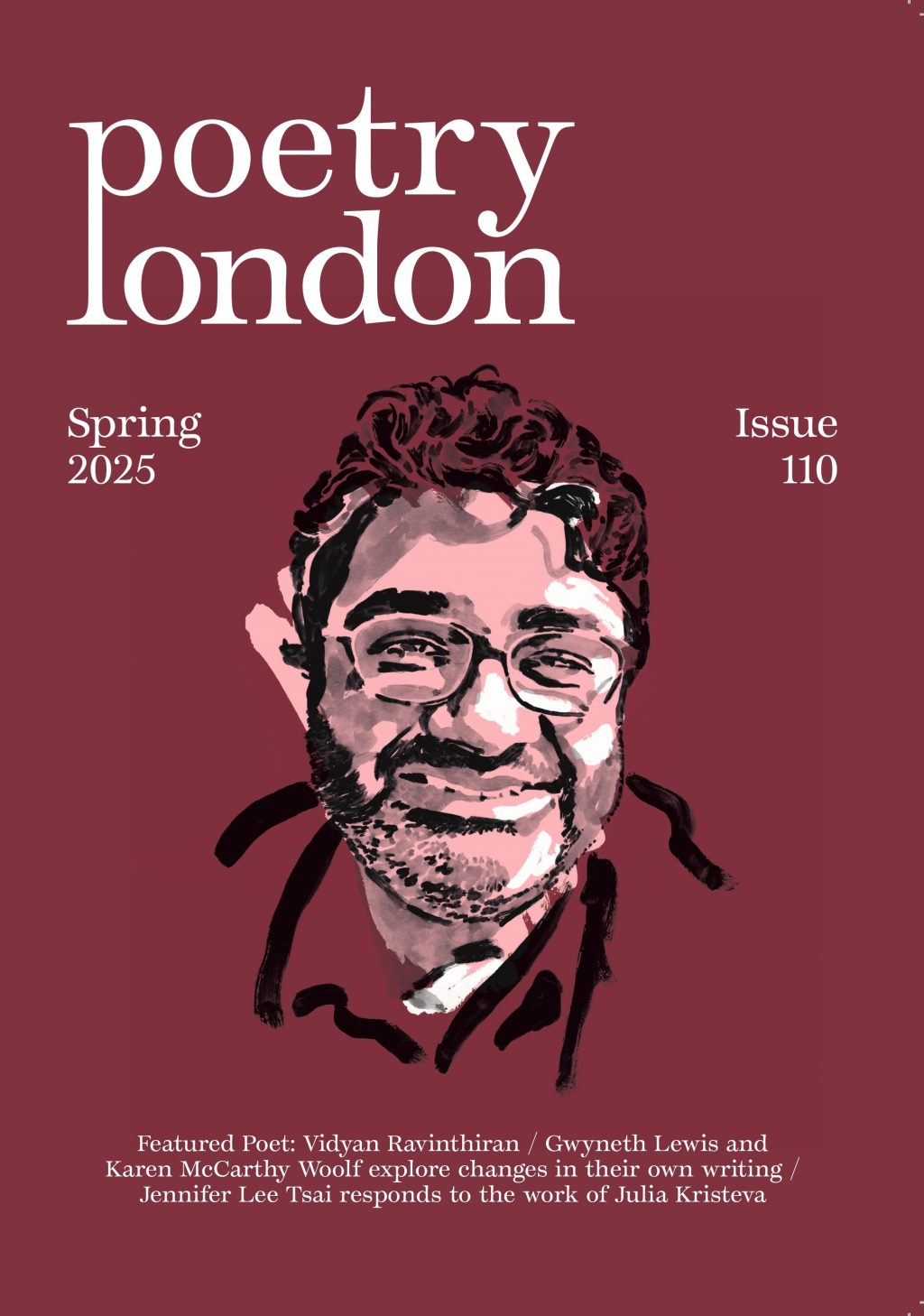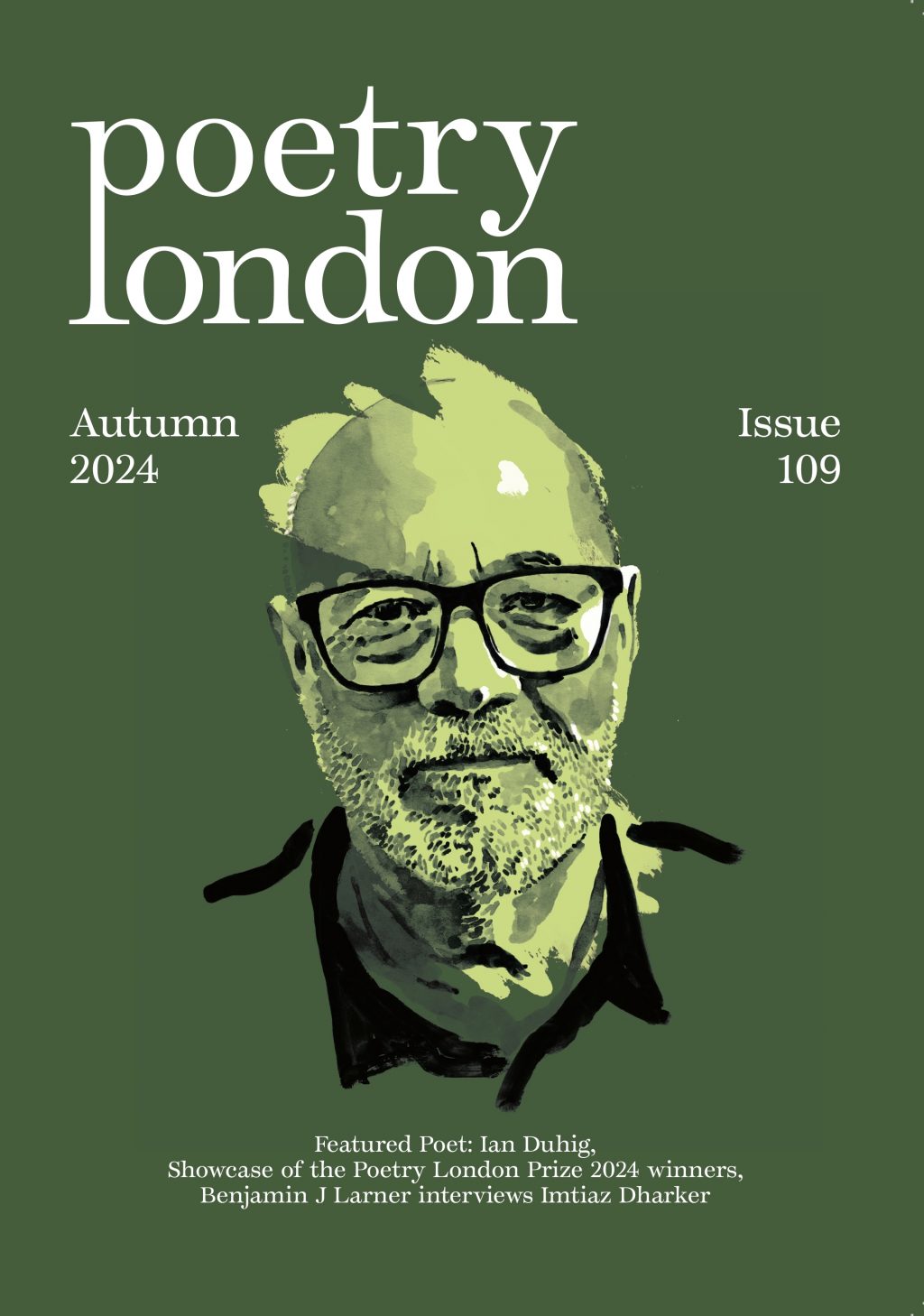A Neo-Modernist Chameleon
Drew Milne on the revived reputation of Nicholas Moore
Nicholas Moore
Selected Poems (edited by John Lucas and Matthew Welton with an introduction by Mark Ford)
Shoestring £14.99
Amid the scrambled history of neo-modernist revivals, the case for rediscovering Nicholas Moore recurs. Although prominent in the 1940s, Moore was subsequently neglected. Interest revived, along with new publications, in the late 1960s and early 1970s. After Moore’s death in 1986, Peter Riley edited two books: Lacrimae Rerum (1988) and a selected poems from Carcanet, Longings of the Acrobats (1990). This new and much larger selection from Shoestring Press refreshes the claim for Moore’s importance.
Mark Ford’s engaging introduction highlights the poetry’s ‘expansive, eloquent, self-conscious’ and ‘life-affirming’ qualities. He suggests that Moore’s ‘fluid, colloquial idiom, full of jazz references and urban vignettes’ bears little resemblance to the New Apocalyptics with whom Moore is often grouped. Moore nevertheless appeared alongside Dylan Thomas in the epochal anthology The New Apocalypse (Fortune Press, 1939) edited by JF Hendry and Henry Treece. Sometimes misread as new romantics, the new apocalyptics were attempting a neo-modernist regroupment, influenced, for example, by the modernisms of Joyce, Kafka and Surrealism. Moore developed his own, distinctive, and often jaunty poetry, by kicking back and through the delights of Wallace Stevens, but also with a touch of Henry Miller, on whom he wrote a short book in the early 1940s. Moore could be misread as aspiring to make plangent hymns to a post-surrealist Dionysus, but this would miss his undercutting wit and comedic technique, qualities that drew praise from WH Auden and, later, John Ashbery.
Take, for example, the conclusion of Moore’s ‘Ideas of Disorder at Torquay’:
The trams still run. In the white-ribbed café,
It is still possible to take coffee,
Or in the gorgeous flower-perfect lounge
Sip gentle teas. Order is possible.
The lupins and the saxifrage have it.
So does the welcoming and battling sea,
The gentle rocks. But something holds dismay
Like a round moon upon faded Torquay.
Something, the essence of a change that seems
A breaking up of order, something grave
Troubles the waters of contentment, moves
The old, cold ladies to a troubled love.
At first blush, the poem’s nod to Wallace Stevens is too direct, too knowingly intimate with its analogue, as if Moore were mocking ‘The Idea of Order at Key West’. There is a satirical note in the audacity, but allowing for its first publication around 1942, the troubled order is also that of Europe at war; Moore was a conscientious objector. The drama of the poem is in the way it establishes a force field of movement across the tram-lines of its verse form, both ‘welcoming and battling’, so as to affirm pacifist, flowery gorgeousness and troubled love. Moore’s tonal comedy takes its distance from the borrowed artifice of Stevens, to suggest a troubled solidarity. His homage to the extravagant techniques of Stevens repays investigation; apparently awkward pastiche turns out to be a sustained gamble with self-critical satire.
Selected Poems includes Moore’s short essay ‘On the Impossibility of Translation’ as an introduction to Spleen, Moore’s bravura sequence of thirty-one different translations of one poem by Baudelaire. Suggesting he is, ‘in the main a satirist’, Moore continues: ‘The more violent the contradictions of belief in the world the more necessary, I believe, is an astringent wit, and a bite at things that need biting’. Selected Poems includes the whole of the Spleen sequence, and demonstrates a wit prepared to bite the technical artifice that feeds it. The use of different personae to stage different poetic techniques indicates a neo-modernist wit that bears comparison with Fernando Pessoa’s heteronyms. Moore nevertheless defends the poet’s ‘personal idiom that makes the poem’: ‘the grammar of his being’. The many grammars in play in this exercise in style nevertheless reveal Moore as a chameleon of grammar, and not a poet who parroted his own voice. A critical puzzle emerges, then. How far does Moore’s work develop its own singular poetic idiom, and how far does its play of personae and techniques remain satirical and playfully various?
A mark of this puzzle is the way Moore’s most immediately striking poems take their energy from the poets, artists and people to whom they are dedicated. Along with homages to Wallace Stevens, Selected Poems includes poems for dedicatees as various as Max Ernst and Billie Holiday. In ‘The Highlands and the Poet’, Moore honours Hugh MacDiarmid in a poem in which earnest edge and cod Scottishness risks seeming parodic:
He lives in his own oblivion perhaps
Happier than the majority of men,
Perched like an eagle over his silent glen
This ‘perhaps’ is perhaps perched too cutely over the opening gambit, but the poem slowly builds a sense that there is integrity in the solidarity evoked with MacDiarmid. By contrast, ‘Walking with Wittgenstein’ remembers the philosopher – Moore was the son of another philosopher, GE Moore – juxtaposing Wittgenstein’s anxious, twitching body with the grace of his thoughts, so as to sketch a chiselled, concluding politics:
For, while he loved the people in the streets,
Philosophy alone rushed on forever.
Moore’s concluding address to Auden in the poem ‘Across the Atlantic’ is no less double-edged: ‘America has but dimmed and polished your thoughts’.
Any selection of Nicholas Moore’s work has a tough time representing the variousness of his art, the play of voices and the often rather chameleon-like qualities of playful, personal and political qualities. Moore is, in the end, no Wallace Stevens, and perhaps not as persistently rewarding as poets such as Charles Madge, Lynette Roberts or WS Graham. His poetry suffers from some rather gendered ‘muse’ structures that are unlikely to win admirers among feminists. His work nevertheless emerges as a central but neglected mode in the range of British neo-modernist poetry and poetics. This selection includes, for example, facsimile pages from Moore’s hilarious ‘Poemenvylopes’, an improvised form typed onto envelopes with an extravagance that remains contemporary.
Surprised by recognition of Moore’s play with personae in Selected Poems, this reader was prompted to seek out a copy of Thirty-Five Anonymous Odes (1944), ascribed to Moore, but published anonymously. The pages of the copy tracked down in the Cambridge University Library, catalogued in 1945, were uncut. A kind librarian cut the pages for me, and I perused this unread but remarkable little book for the first time. Thirty-Five Anonymous Odes seems to have been composed as a poetic sequence with its own book-specific persona. Moore weaves a theme and variation model around odes to peace amid war. As a sequence the effects are generative and cumulative, developing a cluster of resemblances that no single ode can represent on its own:
THE martial clangour of our heart-wracked time,
O my ancient, my triste, my Tottenham sorrow.
Like a bird I fly past the sick streets and street cars,
Taxis, trams, and roaring gaudy buses,
And as I fly sing
“Peace, the incredible texture of Peace is blossoming”.
(‘Twenty-Seventh Ode’)
The texture is indeed scarcely credible, like the deluxe contrails of some latter-day Keats doing bird songs of the letter O: a dove fighting the odds to hymn pacifism. Moore’s play with the ‘ode’ form bears comparison with Frank O’Hara’s odes. There are more than one hundred exclamatory ‘O’s in this short book – reader, I counted them – and the risks of such extremity of artifice are made explicit. The word ‘love’ is no less persistent through the sequence. Why only thirty-five odes to peace and love and not more? O reason not the need. Moore perhaps thought he was in danger of publishing too much, too young, in the 1940s, and preferred anonymity to protect his emerging oeuvre. He may also have wanted to preserve the integrity of this group of poems as a singular poetic in its own right, rather than giving the impression that he was himself some archly Keatsian bird-bard of the O. Either way, there are joys in the compositional process and its development through archaic poetic registers, much as the virtuoso technique of his later Spleen sequence explores the limits both of poetic principle and of the fireworks of poetic artifice. Through the technical poetic challenges Moore set himself, the elaboration of the sequence exhausts the luxuries of poetic technique to reveal its imaginative argument, where a single poem might appear overly fond of its own performance.
The principle of composition in sequential forms runs through Moore’s work and in ways that a selection inevitably obscures. Selected Poems can only offer a glimpse of Moore’s varied and variable poetic works, but it should succeed in persuading more readers to explore a remarkable but still largely unread poet. The real success of this volume is to reveal the need for a much larger collection.

